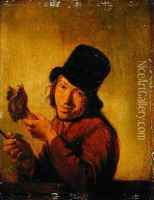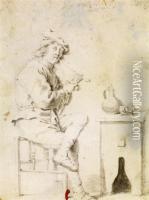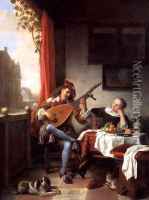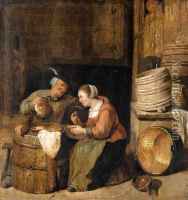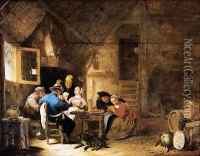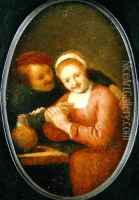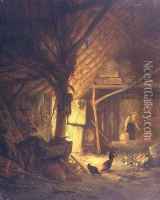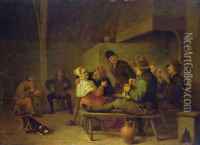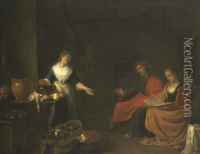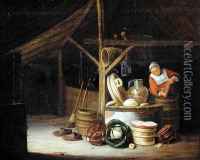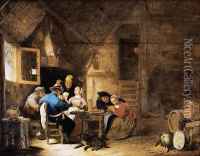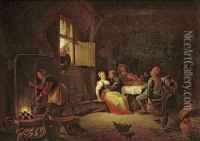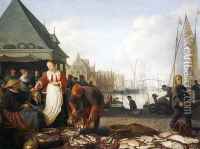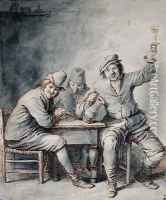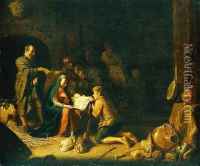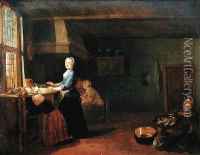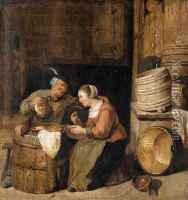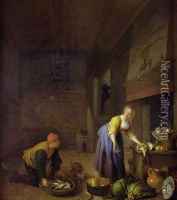Hendrick Maertensz. Sorch (see Sorgh) Paintings
Hendrick Martenszoon Sorgh, also known as Hendrick Maertensz. Sorch, was a Dutch Golden Age painter. Born approximately in 1611 in Rotterdam, Netherlands, Sorgh was known for his genre scenes, portraits, and religious-themed paintings. His works often reflected the daily life of his time, with an emphasis on the interior scenes of the middle class and the depiction of popular customs and festivities.
Sorgh's early life is not well-documented, but it is believed that he trained under Willem Pieterszoon Buytewech, an artist known for his merry company scenes and also hailing from Rotterdam. Sorgh's style was influenced by the works of other contemporary Dutch artists, including Dirck Hals and Adriaen Brouwer. He became a master in the Saint Luke's Guild of Rotterdam in 1634, indicating his recognition as a professional painter.
Throughout his career, Hendrick Sorgh produced a variety of works, from domestic interior scenes filled with rich details and textures to more somber religious pieces. His genre paintings often depicted people engaged in everyday activities, such as tavern scenes, domestic chores, or musical gatherings. He had a knack for capturing the expressions and moods of his subjects, imbuing his paintings with a lively and realistic character.
Sorgh was also known to paint on commission, creating works for the local elite and for churches. His ability to adapt to the tastes of his clients and the market demand of his time contributed to his success as an artist. Despite his achievements, many details of his personal life and training remain unclear, and much of what is known about him is derived from his surviving works and the records of the guilds he was associated with.
Hendrick Sorgh passed away around 1670. Although not as widely recognized today as some of his contemporaries, Sorgh's contribution to Dutch genre painting has been appreciated by art historians, and his works are held in various museum collections, showcasing his talent for capturing the essence of 17th-century Dutch society.
